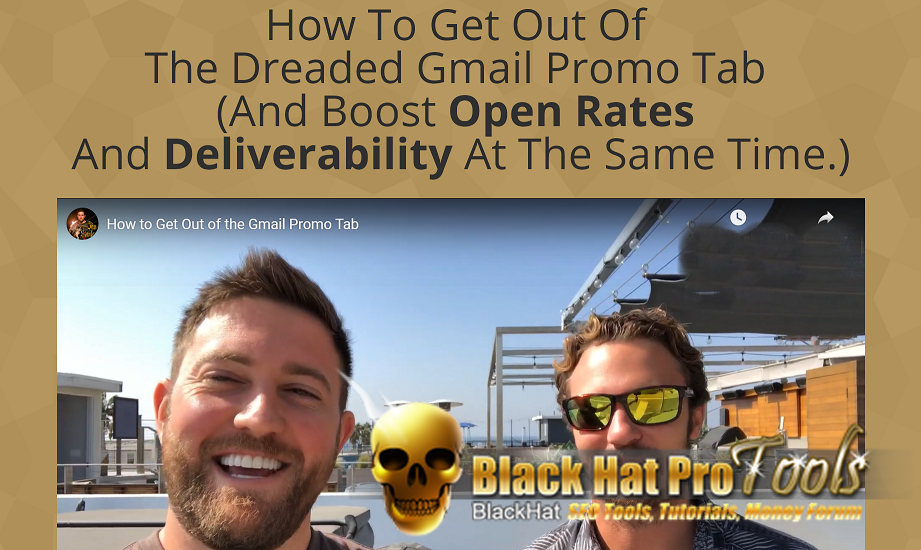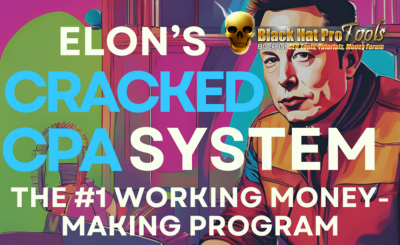
How To Get Out Of The Gmail Promo Tab By Ian Stanley – Free Download
How To Get Out Of The Dreaded Gmail Promo Tab (And Boost Open Rates And Deliverability At The Same Time.)
Here’s what you receive when you get the product:
The How to Get Out of the Promo Tab Video training (14 minutes and 51 seconds)
The Promo Tab Crowdsourced Google Doc to save you time and frustration.
One group follow up call to answer any questions you have.
Here’s what you’ll learn:
The 2 emails you need to send before you mail your list.
The 2 accounts you MUST have set up for tests. (Treat these wrong and you’ll mess everything up.)
The easy way to get out of the Promo Tab.
The harder (but 99% guaranteed) way to get out of the Promo Tab.
My $10,000 (at least) Promo Tab
Welcome Email Mistake.
Honestly, I’d buy this product in a heartbeat if I was on the other side of the keyboard. The only reason I learned this whole method is because Andrew taught it to me.
This is a slightly embarrassing admission but I didn’t even really realize how big of an issue The Promo Tab was. I had removed the Primary, Social, and Promo Tabs from my personal email years ago.
So I had no idea how often I was going to the Promo Tab before Andrew taught me his method.
In fact, the first email in my autoresponder that I was running cold traffic to was going to the Promo Tab. I had no idea. My welcome email was only getting a 53% open rate when it normally gets around 70% to 83%. Once I finally caught this mistake it made a huge difference. I went through the steps and was out of the Promo Tab in about 4 minutes.
Unfortunately that one mistake cost me over $10k because those new opt ins never opened an email and I ended up having to cut those contacts forever. If your first email in an autoresponder is going to the Promo Tab it can destroy that relationship forever.
If there’s one email that’s important than all the rest, it’s the welcome email. If that’s going to the Promo Tab it’s unlikely your new subscribers will find it…
One final note before I get to the cost (investment) of the product itself.
If you currently have test (or seed) accounts set up, you may have them set up wrong. You need two separate accounts and you need to treat them differently. Using your personal email as a seed account is not an accurate way to test.
What Makes Ian Stanley and Andrew Clark
Qualified to Teach This?
Andrew sends over 2 billion (with a B) emails a year through his company’s lists. They manage over 60 different lists and send over 100 different emails every single day. They do this in some of the most difficult deliverability niches online like credit, debt, health, and more. He’s the guy that deliverability experts go to when they don’t know how to do something.
He also (in Ian’s opinion) has an incredible gift for making the complexity of deliverability seem simple and easy to understand. I (Ian) had attended (super) expensive deliverability training in the past but left feeling like I still didn’t really get it. There were too many moving parts.
It wasn’t until Andrew taught me his methods that it finally all made sense to me.
On top of all that, Andrew is brand agnostic. His company uses multiple different Email Service Providers (ESPs). Sometimes they use dedicated IPs. Sometimes they use Shared IPs. It all depends on the list. So you know his methods work for everyone, not just people using specific ESPs.
Ian Stanley has sold over $100,000,000 worth of products online. A lot of that came from email. He typically charges $25k upfront plus $60-80K on the backend just to consult on one funnel or autoresponder.
He’s managed lists anywhere from a few thousand subscribers to over a million subscribers. He’s done it in many different niches from survival, credit, health, and water filtration to how to make money online. He makes more money per subscriber that just about anyone online. He’s considered one of the best email copywriters in the world.
But ironically he was never very knowledgable about deliverability. It wasn’t until he met Andrew that he became an expert in deliverability. (Although nowhere near as good as Andrew.)
So I think it’s fair to say that we’re qualified to teach about the more advanced topics of email marketing 😉




